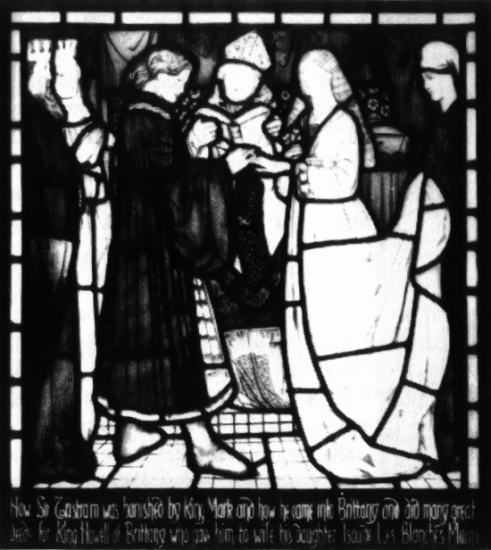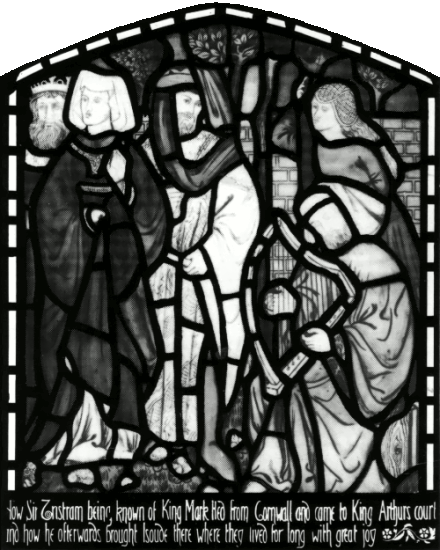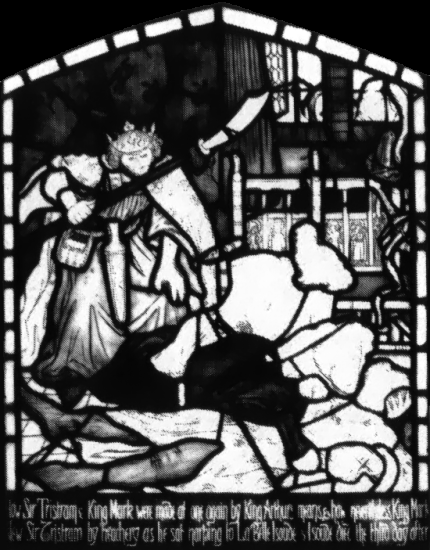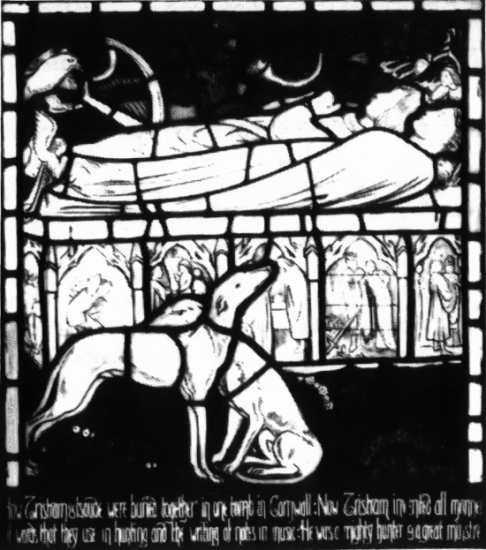The Tristram and Isoude Stained Glass Panels

The Marriage of Tristram and Isoude Les Blanches Main (Burne-Jones)
This panel, by the Morris firm's most used designer, is typical of his ethereal, evocative and uncluttered style, particularly suited to stained glass. Tristram had been banished by King Mark of Cornwall, and after serving King Howell of Brittanny, marries another Isoude, Isoude Les Blanches Mains. The careful grouping of the figures, and the rich colours and design of the robes are extremely effective.

The Recognition of Tristram by La Belle Isoude (Burne-Jones)
Tristram, restored to sanity, is recognised by Isoude upon his return to Cornwall. The bracket (dog) leaped upon Tristram and licked his face, bringing about the recognition. Isoude bends down towards them.

At the Court of King Arthur (William Morris)
Tristram, having fled from Cornwall, was joined at the Court by Isoude, where they lived together for many years. The group includes the two lovers, King Arthur, a harpist and a courtly lady. The composition has a static medieval quality, and the robes are finely painted, with much use of yellow stain (silver nitrate).

Death of Tristram (Ford Madox Brown)
Following their reconciliation by King Arthur, Tristram is treacherously murdered by King Mark, a scene of drama and violent action. Isoude cradles Tristram's head, while King Mark looms above with a long-bladed weapon.

The Tomb of Tristram and Isoude (Burne-Jones)
Carved effigies of the two are shown on top of a standing tomb. On the sides are representations of incidents from their lives, with flowers, grass and two hunting dogs below. Above are angels and symbols of Tristram's knightly attributes, a harp (music), a horn (hunting) and an eagle (bravery). The fine painting and the use of pale green glass give the whole panel a chilly otherworldly quality.
back to previous page





